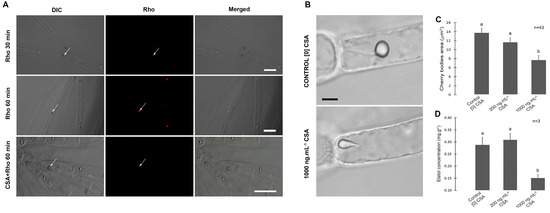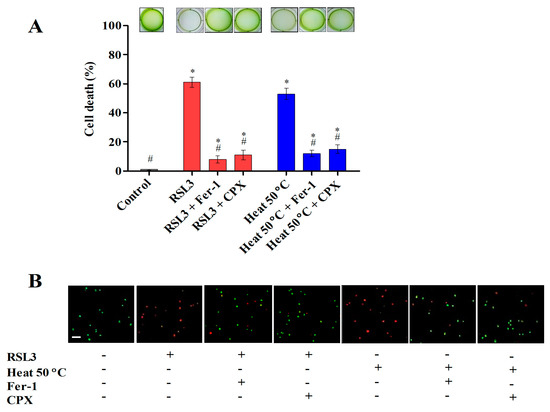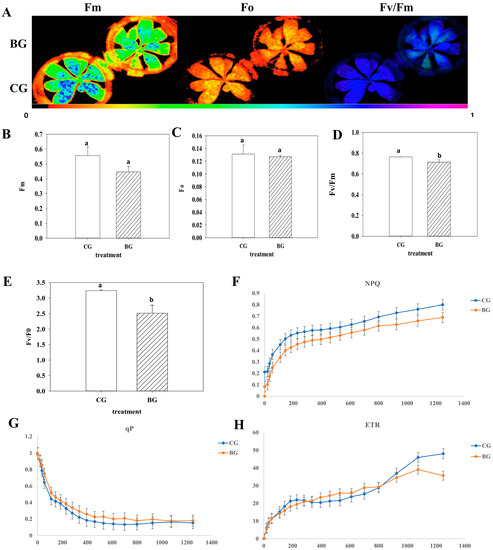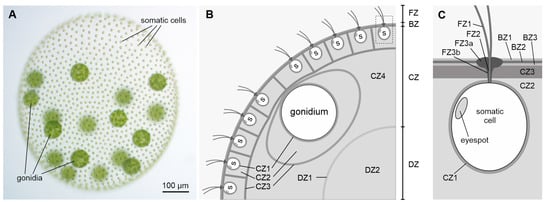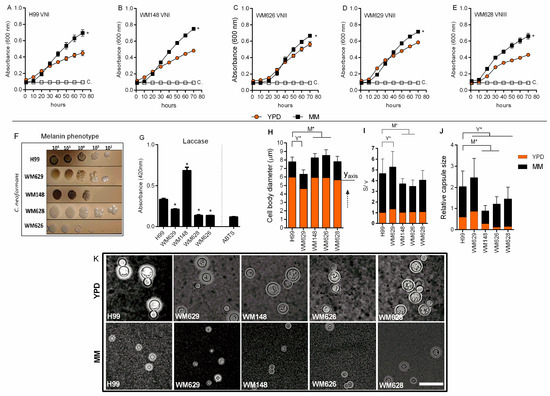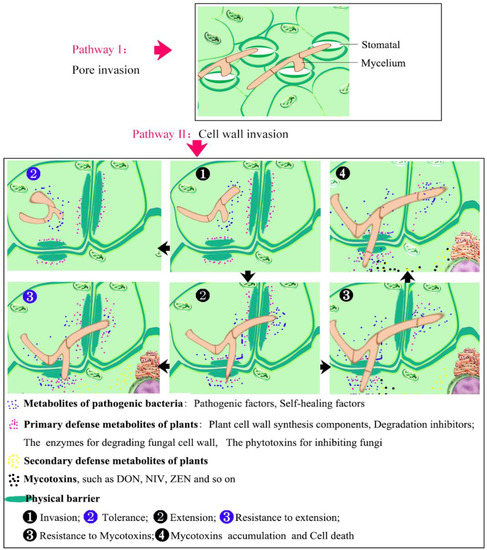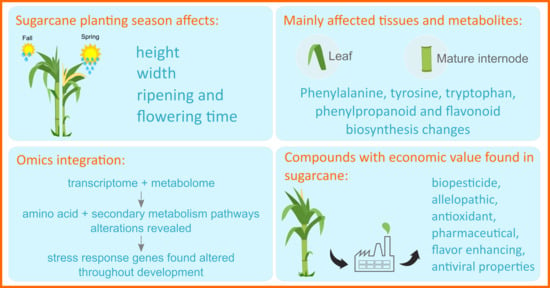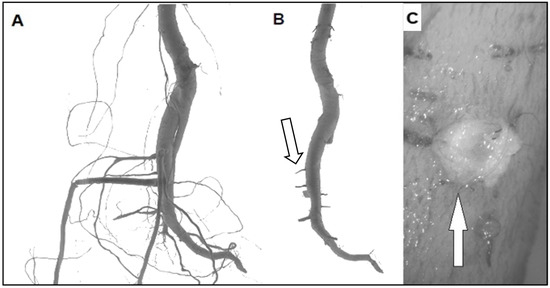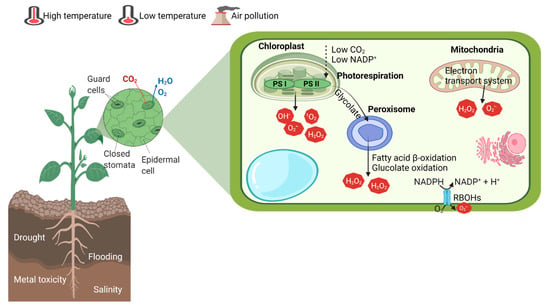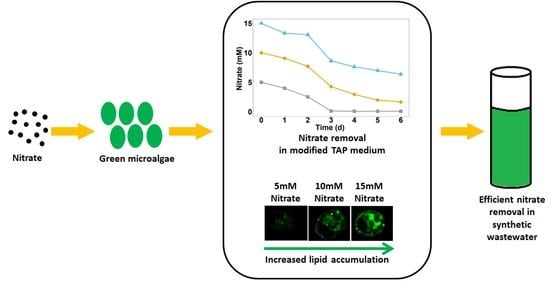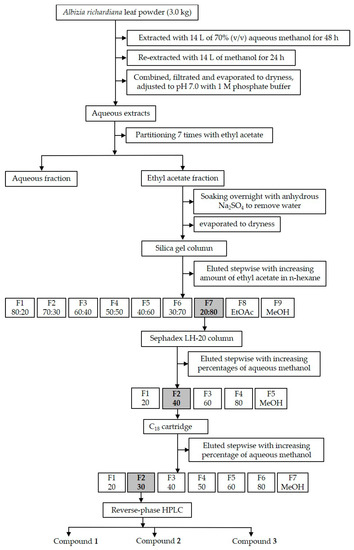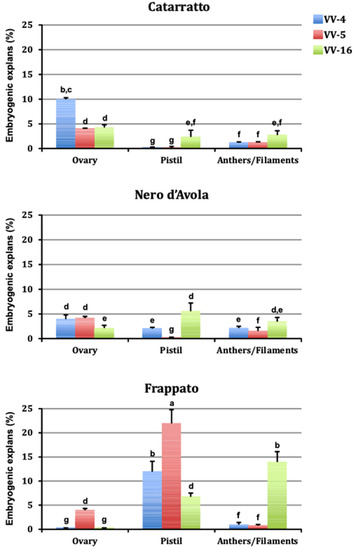Feature Papers in Plant, Algae and Fungi Cell Biology
Share This Topical Collection
Editor
Topical Collection Information
Dear Colleagues,
This Topical Collection entitled “Feature Papers in Plant, Alga, and Fungus Cell Biology” aims to collect high-quality research articles, communications, and review articles in the key field of plant, alga, and fungus cell biology. Since the aim of this Topical Collection is to illustrate frontier research in plant, alga, and fungus cell biology through selected works, we encourage the Editorial Board Members of Cells or relevant experts and colleagues to contribute papers reflecting the latest progress in their research field. We also welcome senior experts in this field to make contributions to this Topical Collection. Please kindly note that all invited papers will be published online free of charge once accepted.
Topics include, without being limited to:
Membrane trafficking
(including secretion and endocytosis);
Organelle biology
(including structure-function; signaling; phase partition);
Autophagy;
Cytoskeletons.
Prof. Henri Batoko
Collection Editor
Manuscript Submission Information
Manuscripts should be submitted online at www.mdpi.com by registering and logging in to this website. Once you are registered, click here to go to the submission form. Manuscripts can be submitted until the deadline. All submissions that pass pre-check are peer-reviewed. Accepted papers will be published continuously in the journal (as soon as accepted) and will be listed together on the collection website. Research articles, review articles as well as short communications are invited. For planned papers, a title and short abstract (about 100 words) can be sent to the Editorial Office for announcement on this website.
Submitted manuscripts should not have been published previously, nor be under consideration for publication elsewhere (except conference proceedings papers). All manuscripts are thoroughly refereed through a single-blind peer-review process. A guide for authors and other relevant information for submission of manuscripts is available on the Instructions for Authors page. Cells is an international peer-reviewed open access semimonthly journal published by MDPI.
Please visit the Instructions for Authors page before submitting a manuscript.
The Article Processing Charge (APC) for publication in this open access journal is 2700 CHF (Swiss Francs).
Submitted papers should be well formatted and use good English. Authors may use MDPI's
English editing service prior to publication or during author revisions.
Published Papers (17 papers)
Open AccessArticle
scRNA-seq Reveals the Mechanism of Fatty Acid Desaturase 2 Mutation to Repress Leaf Growth in Peanut (Arachis hypogaea L.)
by
Puxuan Du, Quanqing Deng, Wenyi Wang, Vanika Garg, Qing Lu, Lu Huang, Runfeng Wang, Haifen Li, Dongxin Huai, Xiaoping Chen, Rajeev K. Varshney, Yanbin Hong and Hao Liu
Cited by 1 | Viewed by 1325
Abstract
Fatty Acid Desaturase 2 (
FAD2) controls the conversion of oleic acids into linoleic acids. Mutations in
FAD2 not only increase the high-oleic content, but also repress the leaf growth. However, the mechanism by which
FAD2 regulates the growth pathway has not
[...] Read more.
Fatty Acid Desaturase 2 (
FAD2) controls the conversion of oleic acids into linoleic acids. Mutations in
FAD2 not only increase the high-oleic content, but also repress the leaf growth. However, the mechanism by which
FAD2 regulates the growth pathway has not been elucidated in peanut leaves with single-cell resolution. In this study, we isolated
fad2 mutant leaf protoplast cells to perform single-cell RNA sequencing. Approximately 24,988 individual cells with 10,249 expressed genes were classified into five major cell types. A comparative analysis of 3495 differentially expressed genes (DEGs) in distinct cell types demonstrated that
fad2 inhibited the expression of the cytokinin synthesis gene
LOG in vascular cells, thereby repressing leaf growth. Further, pseudo-time trajectory analysis indicated that
fad2 repressed leaf cell differentiation, and cell-cycle evidence displayed that
fad2 perturbed the normal cell cycle to induce the majority of cells to drop into the S phase. Additionally, important transcription factors were filtered from the DEG profiles that connected the network involved in high-oleic acid accumulation (
WRKY6), activated the hormone pathway (
WRKY23,
ERF109), and potentially regulated leaf growth (
ERF6,
MYB102,
WRKY30). Collectively, our study describes different gene atlases in high-oleic and normal peanut seedling leaves, providing novel biological insights to elucidate the molecular mechanism of the high-oleic peanut-associated agronomic trait at the single-cell level.
Full article
►▼
Show Figures
Open AccessArticle
Role of ABC Proteins in Secondary Metabolism and Immune (=Defensive) Response in Seaweeds
by
Leonardo T. Salgado, Louisi S. Oliveira, Juliana Echevarria-Lima, Vanessa M. Reis, Daniela B. Sudatti, Fabiano L. Thompson and Renato C. Pereira
Viewed by 689
Abstract
Laurencia seaweed species synthesize a broad range of secondary metabolites, mainly terpenes (e.g., elatol), exhibiting diverse ecological roles, such as defense against fouling and herbivores. Recently, an intricate cellular machinery was described concerning terpenes biosynthetic pathways, storage inside
corps en cerise (CC), and
[...] Read more.
Laurencia seaweed species synthesize a broad range of secondary metabolites, mainly terpenes (e.g., elatol), exhibiting diverse ecological roles, such as defense against fouling and herbivores. Recently, an intricate cellular machinery was described concerning terpenes biosynthetic pathways, storage inside
corps en cerise (CC), and regulated exocytosis in these species. But for seaweeds in general, the proteins involved in transmembrane transport of secondary metabolites remain unknown. Assays with Rhodamine-123 and cyclosporine A (CSA) revealed the presence of ABC transporters in CC membrane of
Laurencia dendroidea. In vivo incubation assays with CSA resulted in CC morphological changes, reduced intracellular elatol concentrations, and increased biofouling cover on the seaweed surface. Cultivation assays in the presence of a marine pathogenic bacteria induced the expression of ABC proteins belonging to the subfamilies ABCB, ABCD, ABCF, and ABCG. The latter subfamily is known to be associated with the transport of plant terpenes. Our results shed new light on the role of ABC proteins in key mechanisms of the defensive system in seaweeds against fouling and herbivory.
Full article
►▼
Show Figures
Open AccessArticle
Lipid ROS- and Iron-Dependent Ferroptotic Cell Death in Unicellular Algae Chlamydomonas reinhardtii
by
Ramachandran Srinivasan, Hyo-Shim Han, Parthiban Subramanian, Anbazhagan Mageswari, Seong-Hoon Kim, Srikanth Tirumani, Vaibhav Kumar Maurya, Gothandam Kodiveri Muthukaliannan and Mohandass Ramya
Cited by 2 | Viewed by 2363
Abstract
The phenomenon of heat stress leading to ferroptosis-like cell death has recently been observed in bacteria as well as plant cells. Despite recent findings, the evidence of ferroptosis, an iron-dependent cell death remains unknown in microalgae. The present study aimed to investigate if
[...] Read more.
The phenomenon of heat stress leading to ferroptosis-like cell death has recently been observed in bacteria as well as plant cells. Despite recent findings, the evidence of ferroptosis, an iron-dependent cell death remains unknown in microalgae. The present study aimed to investigate if heat shock could induce reactive oxygen species (ROS) and iron-dependent ferroptotic cell death in
Chlamydomonas reinhardtii in comparison with RSL3-induced ferroptosis. After RSL3 and heat shock (50 °C) treatments with or without inhibitors,
Chlamydomonas cells were evaluated for cell viability and the induction of ferroptotic biomarkers. Both the heat shock and RSL3 treatment were found to trigger ferroptotic cell death, with hallmarks of glutathione–ascorbic acid depletion, GPX5 downregulation, mitochondrial dysfunction, an increase in cytosolic calcium, ROS production, lipid peroxidation, and intracellular iron accumulation via heme oxygenase-1 activation (HO-1). Interestingly, the cells preincubated with ferroptosis inhibitors (ferrostatin-1 and ciclopirox) significantly reduced RSL3- and heat-induced cell death by preventing the accumulation of Fe
2+ and lipid ROS. These findings reveal that ferroptotic cell death affects the iron homeostasis and lipid peroxidation metabolism of
Chlamydomonas, indicating that cell death pathways are evolutionarily conserved among eukaryotes.
Full article
►▼
Show Figures
Open AccessArticle
Acetylated Proteomics of UV-B Stress-Responsive in Photosystem II of Rhododendron chrysanthum
by
Meiqi Liu, Qi Sun, Kun Cao, Hongwei Xu and Xiaofu Zhou
Cited by 6 | Viewed by 1193
Abstract
Rhododendron chrysanthum (
Rhododendron chrysanthum Pall.), an alpine plant, has developed UV-B resistance mechanisms and has grown to be an important plant resource with the responsive capacity of UV-B stress. Our study uses acetylated proteomics and proteome analysis, together with physiological measurement, to
[...] Read more.
Rhododendron chrysanthum (
Rhododendron chrysanthum Pall.), an alpine plant, has developed UV-B resistance mechanisms and has grown to be an important plant resource with the responsive capacity of UV-B stress. Our study uses acetylated proteomics and proteome analysis, together with physiological measurement, to show the
Rhododendron chrysanthum seedling’s reaction to UV-B stress. Following a 2-day, 8-h radiation therapy, 807 significantly altered proteins and 685 significantly altered acetylated proteins were discovered. Significantly altered proteins and acetylated proteins, according to COG analysis, were mostly engaged in post-translational modification, protein turnover, and chaperone under UV-B stress. It indicates that protein acetylation modification plays an important role in plant resistance to UV-B. The experimental results show that photosynthesis was inhibited under UV-B stress, but some photosynthetic proteins will undergo acetylation modification, which can alleviate the UV-B damage of plants to a certain extent. These results will serve as the basis for more research into the intricate molecular mechanisms underlying plant UV-B adaptation.
Full article
►▼
Show Figures
Open AccessArticle
Cell Type-Specific Pherophorins of Volvox carteri Reveal Interplay of Both Cell Types in ECM Biosynthesis
by
Benjamin von der Heyde and Armin Hallmann
Cited by 2 | Viewed by 3346
Abstract
The spheroidal green algae
Volvox carteri serves as a model system to investigate the formation of a complex, multifunctional extracellular matrix (ECM) in a relatively simple, multicellular organism with cell differentiation. The
V. carteri ECM is mainly composed of hydroxyproline-rich glycoproteins (HRGPs) and
[...] Read more.
The spheroidal green algae
Volvox carteri serves as a model system to investigate the formation of a complex, multifunctional extracellular matrix (ECM) in a relatively simple, multicellular organism with cell differentiation. The
V. carteri ECM is mainly composed of hydroxyproline-rich glycoproteins (HRGPs) and there are diverse region-specific, anatomically distinct structures in the ECM. One large protein family with importance for ECM biosynthesis stands out: the pherophorins. The few pherophorins previously extracted from the ECM and characterized, were specifically expressed by somatic cells. However, the localization and function of most pherophorins is unknown. Here, we provide a phylogenetic analysis of 153 pherophorins of
V. carteri and its unicellular relative
Chlamydomonas reinhardtii. Our analysis of cell type-specific mRNA expression of pherophorins in
V. carteri revealed that, contrary to previous assumptions, only about half (52%) of the 102 investigated pherophorin-related genes show stronger expression in somatic cells, whereas about one-third (34%) of the genes show significant higher expression in reproductive cells (gonidia). We fused two pherophorin genes that are expressed by different cell types to
yfp, stably expressed them in
Volvox and studied the tagged proteins by live-cell imaging. In contrast to earlier biochemical approaches, this genetic approach also allows the in vivo analysis of non-extractable, covalently cross-linked ECM proteins. We demonstrate that the soma-specific pherophorin SSG185 is localized in the outermost ECM structures of the spheroid, the boundary zone and at the flagellar hillocks. SSG185:YFP is detectable as early as 1.5 h after completion of embryogenesis. It is then present for the rest of the life cycle. The gonidia-specific pherophorin PhG is localized in the gonidial cellular zone 1 (“gonidial vesicle”) suggesting its involvement in the protection of gonidia and developing embryos until hatching. Even if somatic cells produce the main portion of the ECM of the spheroids, ECM components produced by gonidia are also required to cooperatively assemble the total ECM. Our results provide insights into the evolution of the pherophorin protein family and convey a more detailed picture of
Volvox ECM synthesis.
Full article
►▼
Show Figures
Open AccessArticle
The Dynamics of Cryptococcus neoformans Cell and Transcriptional Remodeling during Infection
by
Gustavo J. C. Freitas, Ludmila Gouveia-Eufrasio, Eluzia C. P. Emidio, Hellem C. S. Carneiro, Ludmila de Matos Baltazar, Marliete C. Costa, Susana Frases, Glauber R. de Sousa Araújo, Tatiane A. Paixão, Brunno G. Sossai, Melissa Caza, James W. Kronstad, Nalu T. A. Peres and Daniel A. Santos
Cited by 2 | Viewed by 1891
Abstract
The phenotypic plasticity of
Cryptococcus neoformans is widely studied and demonstrated in vitro, but its influence on pathogenicity remains unclear. In this study, we investigated the dynamics of cryptococcal cell and transcriptional remodeling during pulmonary infection in a murine model. We showed that in
[...] Read more.
The phenotypic plasticity of
Cryptococcus neoformans is widely studied and demonstrated in vitro, but its influence on pathogenicity remains unclear. In this study, we investigated the dynamics of cryptococcal cell and transcriptional remodeling during pulmonary infection in a murine model. We showed that in
Cryptococcus neoformans, cell size reduction (cell body ≤ 3 µm) is important for initial adaptation during infection. This change was associated with reproductive fitness and tissue invasion. Subsequently, the fungus develops mechanisms aimed at resistance to the host’s immune response, which is determinant for virulence. We investigated the transcriptional changes involved in this cellular remodeling and found an upregulation of transcripts related to ribosome biogenesis at the beginning (6 h) of infection and a later (10 days) upregulation of transcripts involved in the inositol pathway, energy production, and the proteasome. Consistent with a role for the proteasome, we found that its inhibition delayed cell remodeling during infection with the H99 strain. Altogether, these results further our understanding of the infection biology of
C. neoformans and provide perspectives to support therapeutic and diagnostic targets for cryptococcosis.
Full article
►▼
Show Figures
Open AccessArticle
Innate, High Tolerance to Zinc and Lead in Violets Confirmed at the Suspended Cell Level
by
Szymon Miszczak, Klaudia Sychta, Sławomir Dresler, Agnieszka Kurdziel, Agnieszka Hanaka and Aneta Słomka
Viewed by 1542
Abstract
Many species of the
Viola L. genus (violets) colonize areas with high concentrations of trace elements in the soil, e.g., nickel, cadmium, zinc, and lead. Although tolerance to heavy metals is a common phenomenon in violets, it is not clear whether this is
[...] Read more.
Many species of the
Viola L. genus (violets) colonize areas with high concentrations of trace elements in the soil, e.g., nickel, cadmium, zinc, and lead. Although tolerance to heavy metals is a common phenomenon in violets, it is not clear whether this is the result of gradual microevolutionary processes as a part of the adaptation to the specific conditions, or whether the tolerance was inherited from the ancestor(s). We developed cell suspension cultures of five plant species: two non-metallophytes—
Arabidopsis thaliana (Col-0) and
Viola ·
wittrockiana, and three metallophytes—
V. philippica,
V. tricolor, and
Silene vulgaris subsp.
humilis for tolerance tests. The aim of the study was to measure the level of tolerance of violets in comparison with species from the other genera to verify the hypothesis of the high, innate tolerance of the former. We measured cell viability, non-enzymatic antioxidant content, and the accumulation of heavy metals after cell treatment with Zn or Pb. The results indicate they are innate and independent on the ecological status (metallophyte vs. non-metallophyte) and high in comparison with other species tolerance to Zn and Pb in violets. Viability of the cells after Zn and Pb (1000 μM) exposure for 72 h was the highest in violets. Antioxidant content, after heavy metal treatment, increased significantly, particularly in metallophyte violets, indicating their high responsivity to metals. In all species, lead was detected in the protoplasm of the cells, not in the vacuole or cell wall. All violets were characterized by the accumulation capacity of lead. Here, we clearly show that the physiological and biochemical studies conducted with the use of heavy metals on plant cells translate into the heavy metal tolerance of the species.
Full article
►▼
Show Figures
Open AccessReview
Arms Race between the Host and Pathogen Associated with Fusarium Head Blight of Wheat
by
Chunhong Hu, Peng Chen, Xinhui Zhou, Yangchen Li, Keshi Ma, Shumei Li, Huaipan Liu and Lili Li
Cited by 4 | Viewed by 2494
Abstract
Fusarium head blight (FHB), or scab, caused by
Fusarium species, is an extremely destructive fungal disease in wheat worldwide. In recent decades, researchers have made unremitting efforts in genetic breeding and control technology related to FHB and have made great progress, especially in
[...] Read more.
Fusarium head blight (FHB), or scab, caused by
Fusarium species, is an extremely destructive fungal disease in wheat worldwide. In recent decades, researchers have made unremitting efforts in genetic breeding and control technology related to FHB and have made great progress, especially in the exploration of germplasm resources resistant to FHB; identification and pathogenesis of pathogenic strains; discovery and identification of disease-resistant genes; biochemical control, and so on. However, FHB burst have not been effectively controlled and thereby pose increasingly severe threats to wheat productivity. This review focuses on recent advances in pathogenesis, resistance quantitative trait loci (QTLs)/genes, resistance mechanism, and signaling pathways. We identify two primary pathogenetic patterns of
Fusarium species and three significant signaling pathways mediated by UGT, WRKY, and SnRK1, respectively; many publicly approved superstar QTLs and genes are fully summarized to illustrate the pathogenetic patterns of
Fusarium species, signaling behavior of the major genes, and their sophisticated and dexterous crosstalk. Besides the research status of FHB resistance, breeding bottlenecks in resistant germplasm resources are also analyzed deeply. Finally, this review proposes that the maintenance of intracellular ROS (reactive oxygen species) homeostasis, regulated by several TaCERK-mediated theoretical patterns, may play an important role in plant response to FHB and puts forward some suggestions on resistant QTL/gene mining and molecular breeding in order to provide a valuable reference to contain FHB outbreaks in agricultural production and promote the sustainable development of green agriculture.
Full article
►▼
Show Figures
Open AccessArticle
Transcriptional Programs and Regulators Underlying Age-Dependent and Dark-Induced Senescence in Medicago truncatula
by
Kashif Mahmood, Ivone Torres-Jerez, Nick Krom, Wei Liu and Michael K. Udvardi
Cited by 3 | Viewed by 2066
Abstract
In forage crops, age-dependent and stress-induced senescence reduces forage yield and quality. Therefore, delaying leaf senescence may be a way to improve forage yield and quality as well as plant resilience to stresses. Here, we used RNA-sequencing to determine the molecular bases of
[...] Read more.
In forage crops, age-dependent and stress-induced senescence reduces forage yield and quality. Therefore, delaying leaf senescence may be a way to improve forage yield and quality as well as plant resilience to stresses. Here, we used RNA-sequencing to determine the molecular bases of age-dependent and dark-induced leaf senescence in
Medicago truncatula. We identified 6845 differentially expressed genes (DEGs) in M3 leaves associated with age-dependent leaf senescence. An even larger number (14219) of DEGs were associated with dark-induced senescence. Upregulated genes identified during age-dependent and dark-induced senescence were over-represented in oxidation–reduction processes and amino acid, carboxylic acid and chlorophyll catabolic processes. Dark-specific upregulated genes also over-represented autophagy, senescence and cell death. Mitochondrial functions were strongly inhibited by dark-treatment while these remained active during age-dependent senescence. Additionally, 391 DE transcription factors (TFs) belonging to various TF families were identified, including a core set of 74 TFs during age-dependent senescence while 759 DE TFs including a core set of 338 TFs were identified during dark-induced senescence. The heterologous expression of several senescence-induced TFs belonging to NAC, WKRY, bZIP, MYB and HD-zip TF families promoted senescence in tobacco leaves. This study revealed the dynamics of transcriptomic responses to age- and dark-induced senescence in
M. truncatula and identified senescence-associated TFs that are attractive targets for future work to control senescence in forage legumes.
Full article
►▼
Show Figures
Open AccessArticle
Planting Season Impacts Sugarcane Stem Development, Secondary Metabolite Levels, and Natural Antisense Transcription
by
Maryke Wijma, Carolina Gimiliani Lembke, Augusto Lima Diniz, Luciane Santini, Leonardo Zambotti-Villela, Pio Colepicolo, Monalisa Sampaio Carneiro and Glaucia Mendes Souza
Cited by 6 | Viewed by 3422
Abstract
To reduce the potentially irreversible environmental impacts caused by fossil fuels, the use of renewable energy sources must be increased on a global scale. One promising source of biomass and bioenergy is sugarcane. The study of this crop’s development in different planting seasons
[...] Read more.
To reduce the potentially irreversible environmental impacts caused by fossil fuels, the use of renewable energy sources must be increased on a global scale. One promising source of biomass and bioenergy is sugarcane. The study of this crop’s development in different planting seasons can aid in successfully cultivating it in global climate change scenarios. The sugarcane variety SP80-3280 was field grown under two planting seasons with different climatic conditions. A systems biology approach was taken to study the changes on physiological, morphological, agrotechnological, transcriptomics, and metabolomics levels in the leaf +1, and immature, intermediate and mature internodes. Most of the variation found within the transcriptomics and metabolomics profiles is attributed to the differences among the distinct tissues. However, the integration of both transcriptomics and metabolomics data highlighted three main metabolic categories as the principal sources of variation across tissues: amino acid metabolism, biosynthesis of secondary metabolites, and xenobiotics biodegradation and metabolism. Differences in ripening and metabolite levels mainly in leaves and mature internodes may reflect the impact of contrasting environmental conditions on sugarcane development. In general, the same metabolites are found in mature internodes from both “one-year” and “one-and-a-half-year sugarcane”, however, some metabolites (i.e., phenylpropanoids with economic value) and natural antisense transcript expression are only detected in the leaves of “one-year” sugarcane.
Full article
►▼
Show Figures
Open AccessHypothesis
Meristematic Connectome: A Cellular Coordinator of Plant Responses to Environmental Signals?
by
Donato Chiatante, Antonio Montagnoli, Dalila Trupiano, Gabriella Sferra, John Bryant, Thomas L. Rost and Gabriella S. Scippa
Cited by 6 | Viewed by 2809
Abstract
Mechanical stress in tree roots induces the production of reaction wood (RW) and the formation of new branch roots, both functioning to avoid anchorage failure and limb damage. The vascular cambium (VC) is the factor responsible for the onset of these responses as
[...] Read more.
Mechanical stress in tree roots induces the production of reaction wood (RW) and the formation of new branch roots, both functioning to avoid anchorage failure and limb damage. The vascular cambium (VC) is the factor responsible for the onset of these responses as shown by their occurrence when all primary tissues and the root tips are removed. The data presented confirm that the VC is able to evaluate both the direction and magnitude of the mechanical forces experienced before coordinating the most fitting responses along the root axis whenever and wherever these are necessary. The coordination of these responses requires intense crosstalk between meristematic cells of the VC which may be very distant from the place where the mechanical stress is first detected. Signaling could be facilitated through plasmodesmata between meristematic cells. The mechanism of RW production also seems to be well conserved in the stem and this fact suggests that the VC could behave as a single structure spread along the plant body axis as a means to control the relationship between the plant and its environment. The observation that there are numerous morphological and functional similarities between different meristems and that some important regulatory mechanisms of meristem activity, such as homeostasis, are common to several meristems, supports the hypothesis that not only the VC but all apical, primary and secondary meristems present in the plant body behave as a single interconnected structure. We propose to name this structure “meristematic connectome” given the possibility that the sequence of meristems from root apex to shoot apex could represent a pluricellular network that facilitates long-distance signaling in the plant body. The possibility that the “meristematic connectome” could act as a single structure active in adjusting the plant body to its surrounding environment throughout the life of a plant is now proposed.
Full article
►▼
Show Figures
Open AccessReview
Biostimulants for the Regulation of Reactive Oxygen Species Metabolism in Plants under Abiotic Stress
by
Mirza Hasanuzzaman, Khursheda Parvin, Kirti Bardhan, Kamrun Nahar, Taufika Islam Anee, Abdul Awal Chowdhury Masud and Vasileios Fotopoulos
Cited by 81 | Viewed by 9234
Abstract
Global food security for a growing population with finite resources is often challenged by multiple, simultaneously occurring on-farm abiotic stresses (i.e., drought, salinity, low and high temperature, waterlogging, metal toxicity, etc.) due to climatic uncertainties and variability. Breeding for multiple stress tolerance is
[...] Read more.
Global food security for a growing population with finite resources is often challenged by multiple, simultaneously occurring on-farm abiotic stresses (i.e., drought, salinity, low and high temperature, waterlogging, metal toxicity, etc.) due to climatic uncertainties and variability. Breeding for multiple stress tolerance is a long-term solution, though developing multiple-stress-tolerant crop varieties is still a challenge. Generation of reactive oxygen species in plant cells is a common response under diverse multiple abiotic stresses which play dual role of signaling molecules or damaging agents depending on concentration. Thus, a delicate balance of reactive oxygen species generation under stress may improve crop health, which depends on the natural antioxidant defense system of the plants. Biostimulants represent a promising type of environment-friendly formulation based on natural products that are frequently used exogenously to enhance abiotic stress tolerance. In this review, we illustrate the potential of diverse biostimulants on the activity of the antioxidant defense system of major crop plants under stress conditions and their other roles in the management of abiotic stresses. Biostimulants have the potential to overcome oxidative stress, though their wider applicability is tightly regulated by dose, crop growth stage, variety and type of biostimulants. However, these limitations can be overcome with the understanding of biostimulants’ interaction with ROS signaling and the antioxidant defense system of the plants.
Full article
►▼
Show Figures
Open AccessArticle
Assessment of Nitrate Removal Capacity of Two Selected Eukaryotic Green Microalgae
by
Vaishali Rani and Gergely Maróti
Cited by 8 | Viewed by 2773
Abstract
Eutrophication is a leading problem in water bodies all around the world in which nitrate is one of the major contributors. The present study was conducted to study the effects of various concentrations of nitrate on two eukaryotic green microalgae,
Chlamydomonas sp. MACC-216
[...] Read more.
Eutrophication is a leading problem in water bodies all around the world in which nitrate is one of the major contributors. The present study was conducted to study the effects of various concentrations of nitrate on two eukaryotic green microalgae,
Chlamydomonas sp. MACC-216 and
Chlorella sp. MACC-360. For this purpose, both microalgae were grown in a modified tris-acetate-phosphate medium (TAP-M) with three different concentrations of sodium nitrate, i.e., 5 mM (TAP-M5), 10 mM (TAP-M10) and 15 mM (TAP-M15), for 6 days and it was observed that both microalgae were able to remove nitrate completely from the TAP-M5 medium. Total amount of pigments decreased with the increasing concentration of nitrate, whereas protein and carbohydrate contents remained unaffected. High nitrate concentration (15 mM) led to an increase in lipids in
Chlamydomonas sp. MACC-216, but not in
Chlorella sp. MACC-360. Furthermore,
Chlamydomonas sp. MACC-216 and
Chlorella sp. MACC-360 were cultivated for 6 days in synthetic wastewater (SWW) with varying concentrations of nitrate where both microalgae grew well and showed an adequate nitrate removal capacity.
Full article
►▼
Show Figures
Open AccessArticle
Three Active Phytotoxic Compounds from the Leaves of Albizia richardiana (Voigt.) King and Prain for the Development of Bioherbicides to Control Weeds
by
Kawsar Hossen, Kaori Ozaki, Toshiaki Teruya and Hisashi Kato-Noguchi
Cited by 7 | Viewed by 2207
Abstract
The global population is increasing day by day. To meet the food demand for such a huge number of people, crop production must increase without damaging the environment, and to prevent synthetic chemical herbicides from polluting the environment, controlling weeds using bioherbicides is
[...] Read more.
The global population is increasing day by day. To meet the food demand for such a huge number of people, crop production must increase without damaging the environment, and to prevent synthetic chemical herbicides from polluting the environment, controlling weeds using bioherbicides is essential. Accordingly, using phytotoxic substances obtained from plants for biological weed management has attracted attention. The plant
Albizia richardiana possesses phytotoxic compounds that have been previously recorded. Hence, we have conducted this research to characterize more phytotoxic compounds in
Albizia richardiana. Aqueous methanolic extracts of
Albizia richardiana plant significantly restricted the growth of the examined plants lettuce and Italian ryegrass in a species- and concentration-dependent manner. Three active phytotoxic compounds were isolated through various chromatographic methods and identified as compound
1,
2, and
3. Compound
3 exhibited stronger phytotoxic potentials than the other two compounds and significantly suppressed the growth of
Lepidium sativum (cress). The concentration of the compounds required for 50% growth reduction (I
50 value) of the
Lepidium sativum seedlings ranged between 0.0827 to 0.4133 mg/mL. The results suggest that these three phytotoxic compounds might contribute to the allelopathic potential of
Albizia richardiana.
Full article
►▼
Show Figures
Open AccessReview
Organellar Introns in Fungi, Algae, and Plants
by
Jigeesha Mukhopadhyay and Georg Hausner
Cited by 25 | Viewed by 5129
Abstract
Introns are ubiquitous in eukaryotic genomes and have long been considered as ‘junk RNA’ but the huge energy expenditure in their transcription, removal, and degradation indicate that they may have functional significance and can offer evolutionary advantages. In fungi, plants and algae introns
[...] Read more.
Introns are ubiquitous in eukaryotic genomes and have long been considered as ‘junk RNA’ but the huge energy expenditure in their transcription, removal, and degradation indicate that they may have functional significance and can offer evolutionary advantages. In fungi, plants and algae introns make a significant contribution to the size of the organellar genomes. Organellar introns are classified as catalytic self-splicing introns that can be categorized as either Group I or Group II introns. There are some biases, with Group I introns being more frequently encountered in fungal mitochondrial genomes, whereas among plants Group II introns dominate within the mitochondrial and chloroplast genomes. Organellar introns can encode a variety of proteins, such as maturases, homing endonucleases, reverse transcriptases, and, in some cases, ribosomal proteins, along with other novel open reading frames. Although organellar introns are viewed to be ribozymes, they do interact with various intron- or nuclear genome-encoded protein factors that assist in the intron RNA to fold into competent splicing structures, or facilitate the turn-over of intron RNAs to prevent reverse splicing. Organellar introns are also known to be involved in non-canonical splicing, such as backsplicing and trans-splicing which can result in novel splicing products or, in some instances, compensate for the fragmentation of genes by recombination events. In organellar genomes, Group I and II introns may exist in nested intronic arrangements, such as introns within introns, referred to as twintrons, where splicing of the external intron may be dependent on splicing of the internal intron. These nested or complex introns, with two or three-component intron modules, are being explored as platforms for alternative splicing and their possible function as molecular switches for modulating gene expression which could be potentially applied towards heterologous gene expression. This review explores recent findings on organellar Group I and II introns, focusing on splicing and mobility mechanisms aided by associated intron/nuclear encoded proteins and their potential roles in organellar gene expression and cross talk between nuclear and organellar genomes. Potential application for these types of elements in biotechnology are also discussed.
Full article
►▼
Show Figures
Open AccessArticle
Autotetraploid Emergence via Somatic Embryogenesis in Vitis vinifera Induces Marked Morphological Changes in Shoots, Mature Leaves, and Stomata
by
Caterina Catalano, Loredana Abbate, Antonio Motisi, Dalila Crucitti, Vincenzo Cangelosi, Antonino Pisciotta, Rosario Di Lorenzo, Francesco Carimi and Angela Carra
Cited by 11 | Viewed by 3031
Abstract
Polyploidy plays an important role in plant adaptation to biotic and abiotic stresses. Alterations of the ploidy in grapevine plants regenerated via somatic embryogenesis (SE) may provide a source of genetic variability useful for the improvement of agronomic characteristics of crops. In the
[...] Read more.
Polyploidy plays an important role in plant adaptation to biotic and abiotic stresses. Alterations of the ploidy in grapevine plants regenerated via somatic embryogenesis (SE) may provide a source of genetic variability useful for the improvement of agronomic characteristics of crops. In the grapevine, the SE induction process may cause ploidy changes without alterations in DNA profile. In the present research, tetraploid plants were observed for 9.3% of ‘Frappato’ grapevine somatic embryos regenerated in medium supplemented with the growth regulators β-naphthoxyacetic acid (10 µM) and N
6-benzylaminopurine (4.4 µM). Autotetraploid plants regenerated via SE without detectable changes in the DNA profiles were transferred in field conditions to analyze the effect of polyploidization. Different ploidy levels induced several anatomical and morphological changes of the shoots and mature leaves. Alterations have been also observed in stomata. The length and width of stomata of tetraploid leaves were 39.9 and 18.6% higher than diploids, respectively. The chloroplast number per guard cell pair was higher (5.2%) in tetraploid leaves. On the contrary, the stomatal index was markedly decreased (12%) in tetraploid leaves. The observed morphological alterations might be useful traits for breeding of grapevine varieties in a changing environment.
Full article
►▼
Show Figures
Open AccessArticle
New Insights into Plant Extracellular DNA. A Study in Soybean Root Extracellular Trap
by
Marie Chambard, Carole Plasson, Céline Derambure, Sophie Coutant, Isabelle Tournier, Benjamin Lefranc, Jérôme Leprince, Marie-Christine Kiefer-Meyer, Azeddine Driouich, Marie-Laure Follet-Gueye and Isabelle Boulogne
Cited by 10 | Viewed by 2750
Abstract
exDNA is found in various organisms, including plants. However, plant exDNA has thus far received little attention related to its origin and role in the RET (root extracellular trap). In this study, we performed the first high-throughput genomic sequencing of plant exDNA from
[...] Read more.
exDNA is found in various organisms, including plants. However, plant exDNA has thus far received little attention related to its origin and role in the RET (root extracellular trap). In this study, we performed the first high-throughput genomic sequencing of plant exDNA from a
Fabaceae with worldwide interest: soybean (
Glycine max (L.) Merr.). The origin of this exDNA was first investigated in control condition, and the results show high-coverage on organelles (mitochondria/plastid) DNA relative to nuclear DNA, as well as a mix of coding and non-coding sequences. In the second part of this study, we investigated if exDNA release was modified during an elicitation with PEP-13 (a peptide elicitor from oomycete genus
Phytophthora). Our results show that treatment of roots with PEP-13 does not affect the composition of exDNA.
Full article
►▼
Show Figures
Planned Papers
The below list represents only planned manuscripts. Some of these
manuscripts have not been received by the Editorial Office yet. Papers
submitted to MDPI journals are subject to peer-review.
Title: Nitrate bioremediation potential of two selected eukaryotic green microalgae
Authors: Vaishali Rani and Gergely Maróti
Affiliation: Institute of Plant Biology, Biological Research Center, Szeged, Hungary







